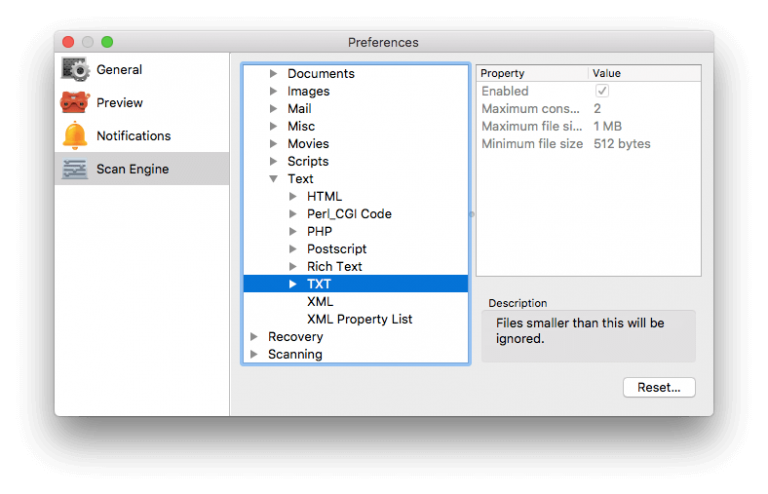
Recovering data from a corrupted Mac file system restored the files but not the file names or folders.Recovering data from a corrupted Windows file system restored the files but not the folders.Recovering data from a deleted partition succeeded, as did the other apps.Recovering data from a formatted drive identified 51 files, including file names, but couldn’t locate all files.Recovering a large 7.5 GB file failed, and only one of its competitors succeeded.

Scanning larger drives will be slower and can take many hours or even days.ĭigiLab Inc ran a wide assortment of tests, and here’s how Data Rescue did with the more difficult cases:
Deep scan on reformatted 32 GB SD card: 11 minutes 4 seconds-other apps took 7:42, 8:29, 31:01, and 36:58. Deep scan on 32 GB SD card: 35 minutes, slightly slower than other apps except one that took 1 hour 6 minutes. Deep scan on 5 GB HDD: 53 seconds, similar to the other apps, though one took just 35 seconds. Quick scan: less than a second, the same as the other apps. Here are Data Rescue’s scan times for a number of tests: Other comparative tests have been performed on data recovery apps, including one by DigiLab Inc that tested five Windows apps. On Windows, the fastest was 3:58 and the slowest, 47:25. On Mac, the fastest scan was 4 minutes and the slowest, 10. Those times are at the faster end of the spectrum, though there were apps that were faster. The Windows version took 6 minutes 19 seconds. Scanning the drive with the Mac version took five minutes, which was faster than the three minutes per gigabyte estimate. To confirm this, I copied a folder containing 10 files to an empty 4 GB USB stick then deleted it. How fast is Prosoft Data Rescue? The app estimates that a quick scan will normally just take a few minutes and a deep scan usually takes three minutes per gigabyte. Scanning for lost files can be time-consuming. Two modes are available, one focused on ease-of-use for regular users, and the other designed for advanced users. At each step, the interface displays clear and helpful descriptions of each feature. Prosoft Data Rescue is easy to install, set up, and use. SMART monitoring for early warning of failing hard drives, though Prosoft’s other product, Drive Genius, does offer this. Prosoft normally offers a mail-in hard drive recovery service, but this has been discontinued due to Covid-19 until further notice. Deleting duplicates and other cleanup features.  Recovery Vault to store deleted files for guaranteed recovery. However, it lacks a few features offed by some other recovery applications: This takes much longer and will not recover the filenames. A deep scan of the entire drive for lost files and file fragments no longer listed in the directory structure. A quick scan of the directory structure for deleted files and can recover the original filenames. In time, the directory entry and data are likely to be overwritten by new files. How is data recovery possible? When a file is deleted, it’s not actually removed from the folder or drive, it is simply marked as being deleted, an operation that Prosoft Data Rescue can undo.
Recovery Vault to store deleted files for guaranteed recovery. However, it lacks a few features offed by some other recovery applications: This takes much longer and will not recover the filenames. A deep scan of the entire drive for lost files and file fragments no longer listed in the directory structure. A quick scan of the directory structure for deleted files and can recover the original filenames. In time, the directory entry and data are likely to be overwritten by new files. How is data recovery possible? When a file is deleted, it’s not actually removed from the folder or drive, it is simply marked as being deleted, an operation that Prosoft Data Rescue can undo. 
However, it’s not the best tool for advanced users and complex recovery situations. It successfully recovered the data I had deleted, and you only pay for recovered data, which sounds affordable.

Its interface is easy to navigate and each step is clearly explained. The official website doesn’t offer more specific information on the pricing. You only pay for the files you want to recover, and this can be as low as $19. The software is a free download that scans for your lost files free of charge. In this review, we’ll focus on the standard versions for Mac and Windows. It offers unlimited system activations and data recovery and is a subscription service that costs $399.96/year. The Professional version has a license designed for IT professionals rather than end-users. Prosoft offers three versions of Data Rescue: It can clone a failing drive onto one that works. Prosoft Data Rescue recovers important files you accidentally lost or deleted as well as drives you accidentally formatted.








 0 kommentar(er)
0 kommentar(er)
